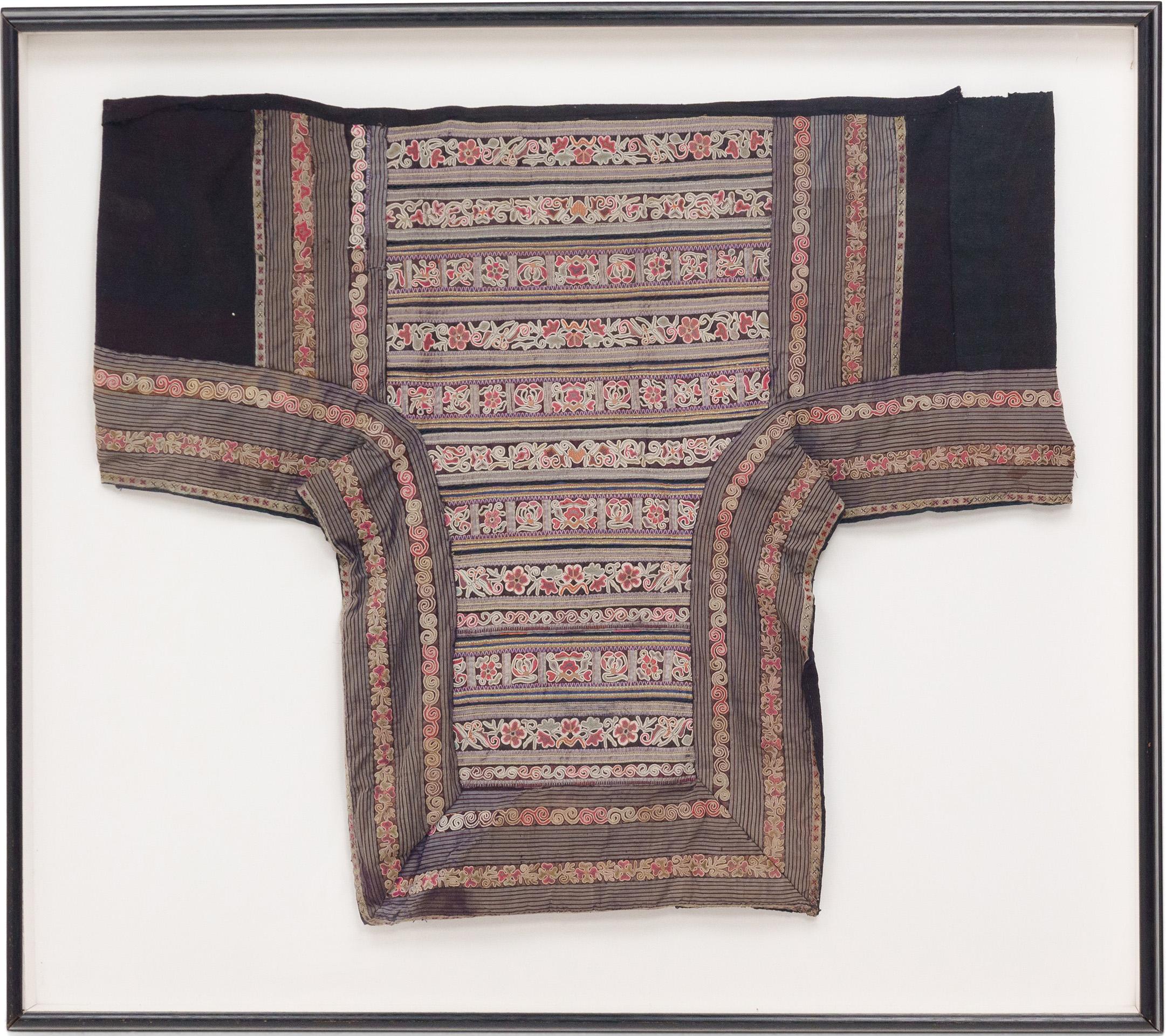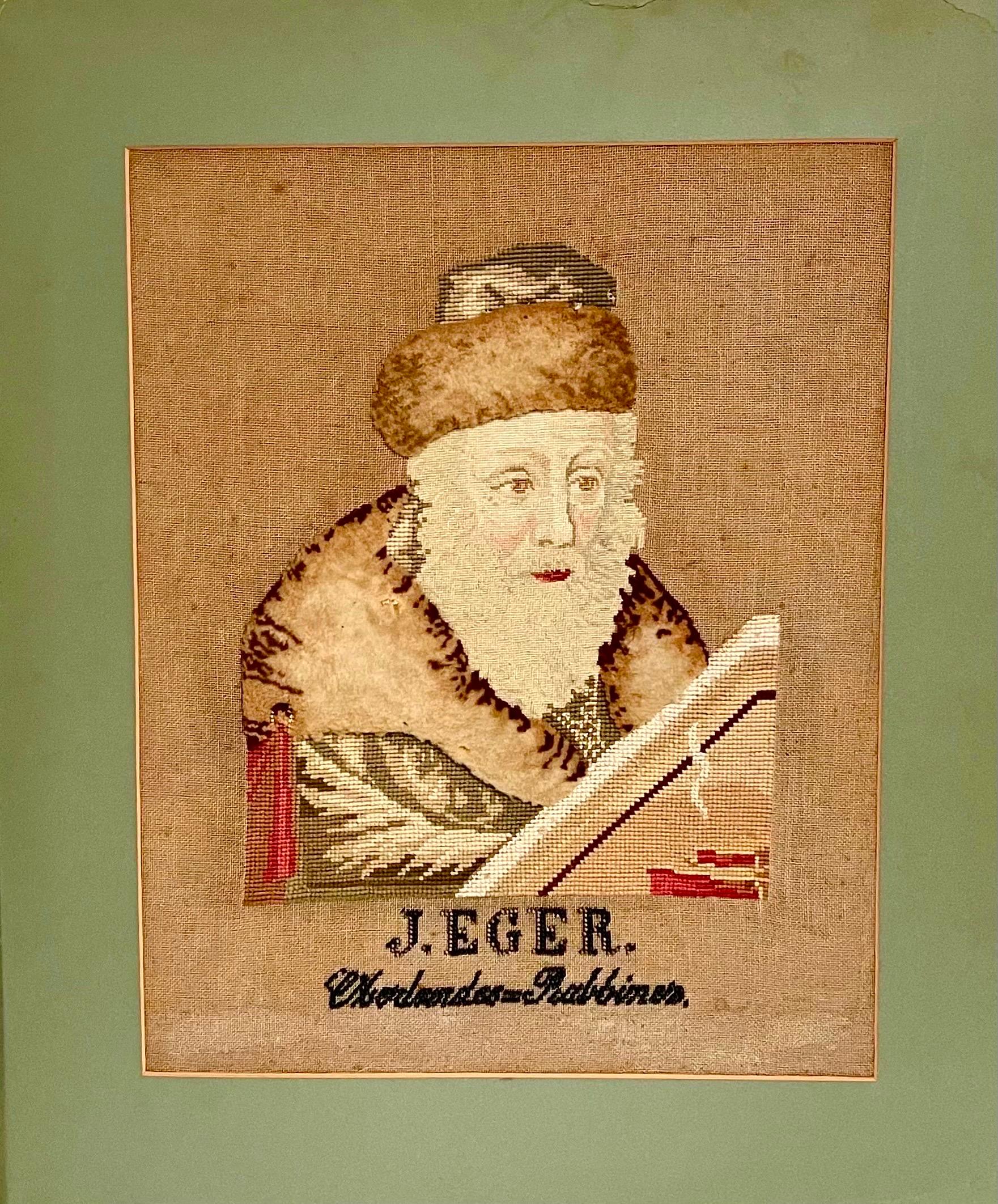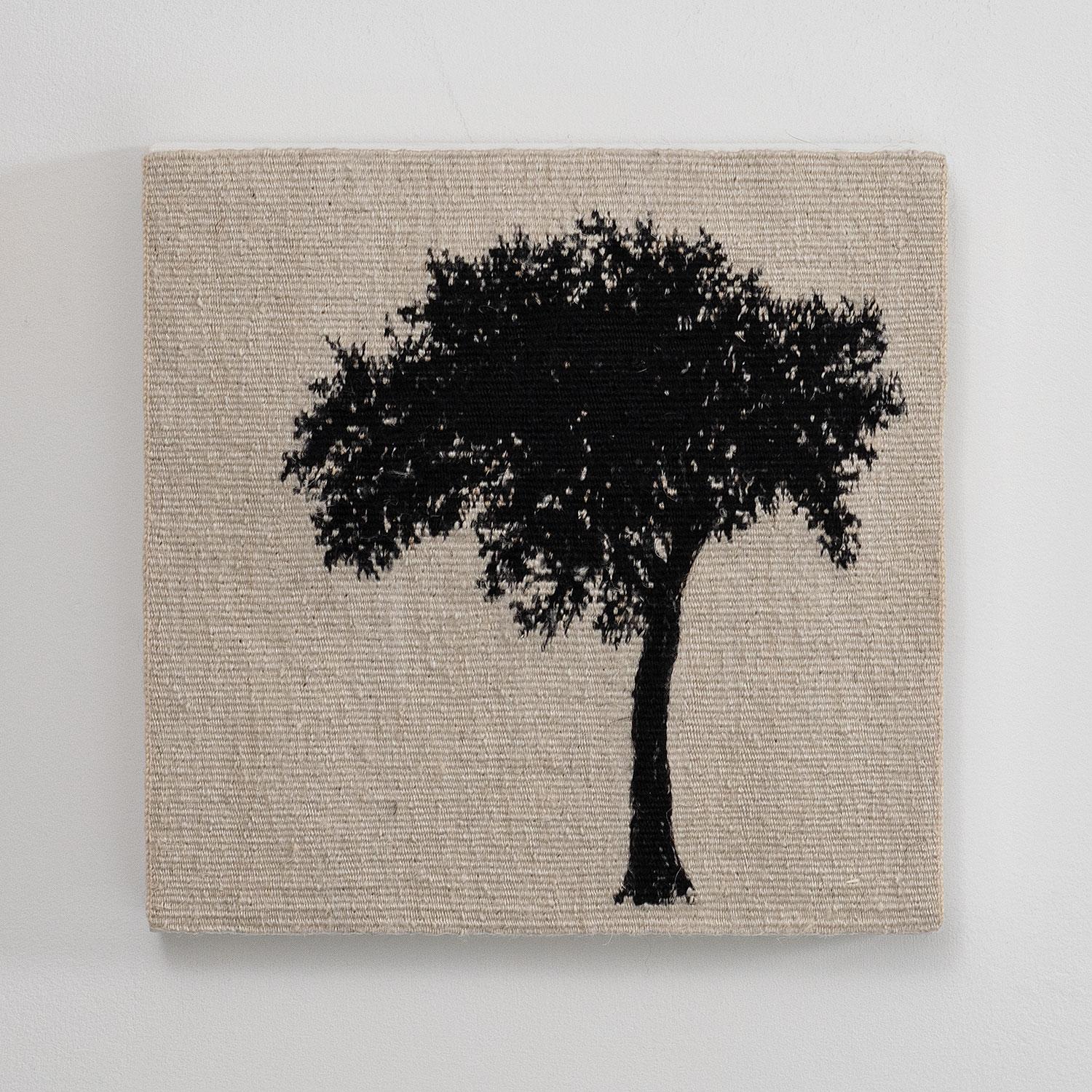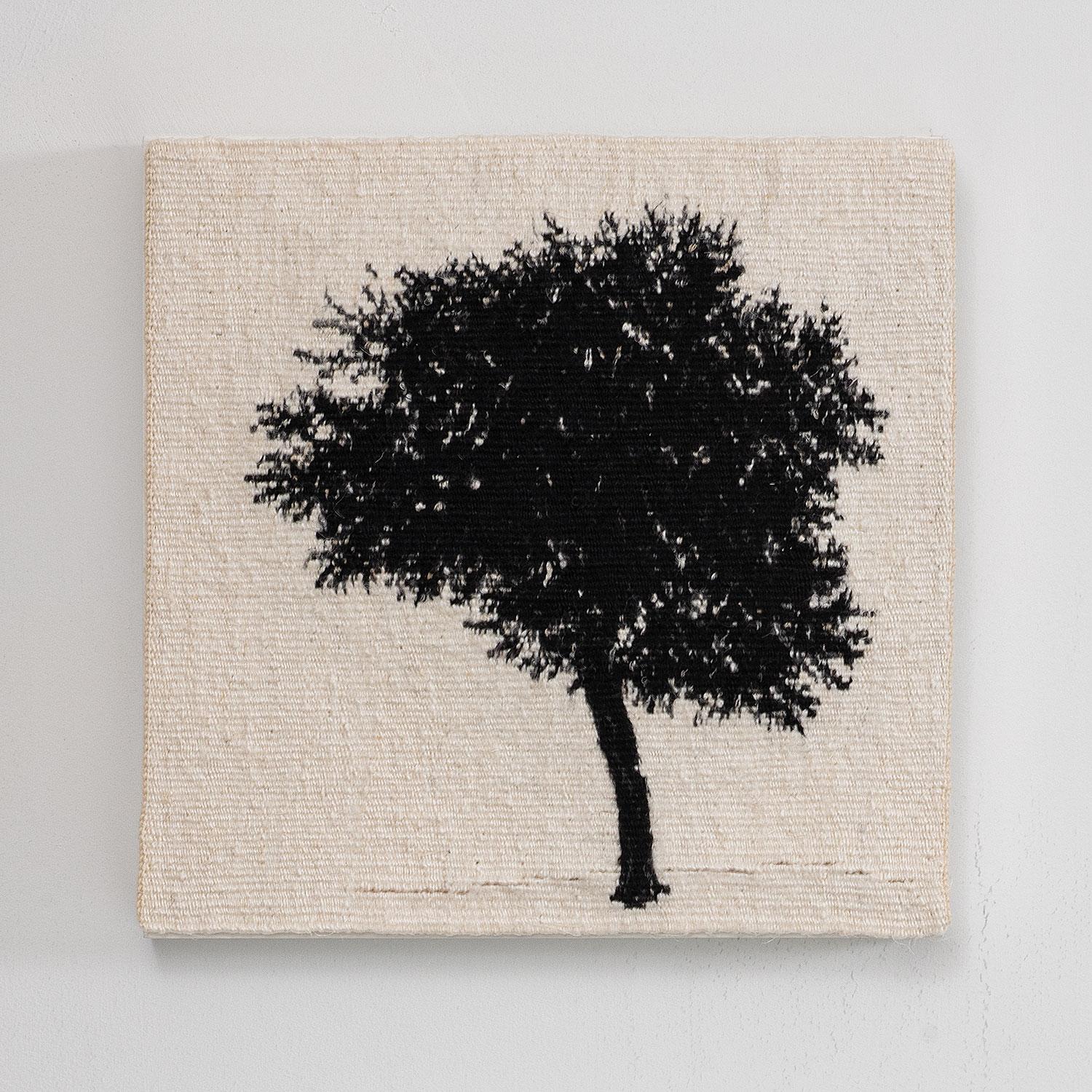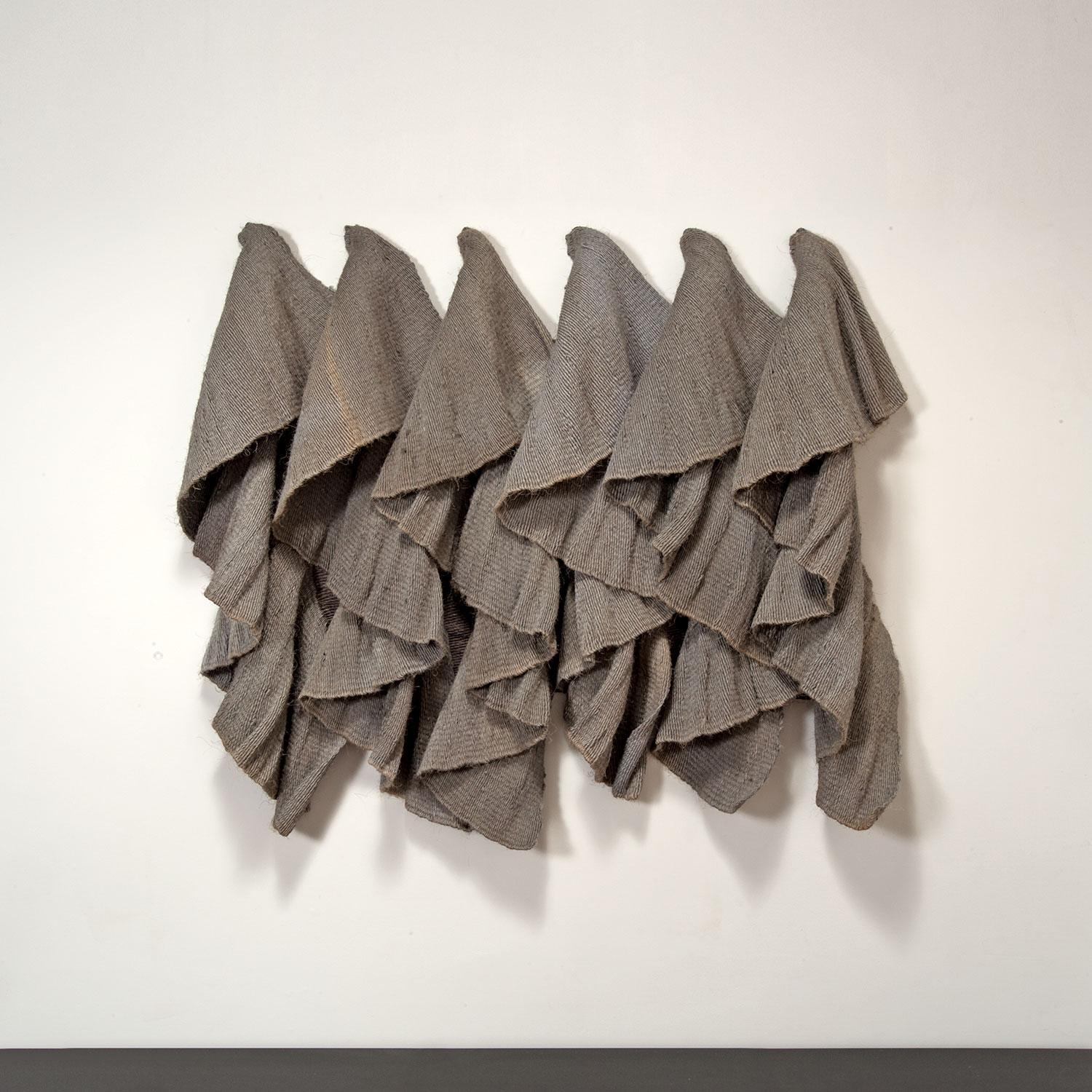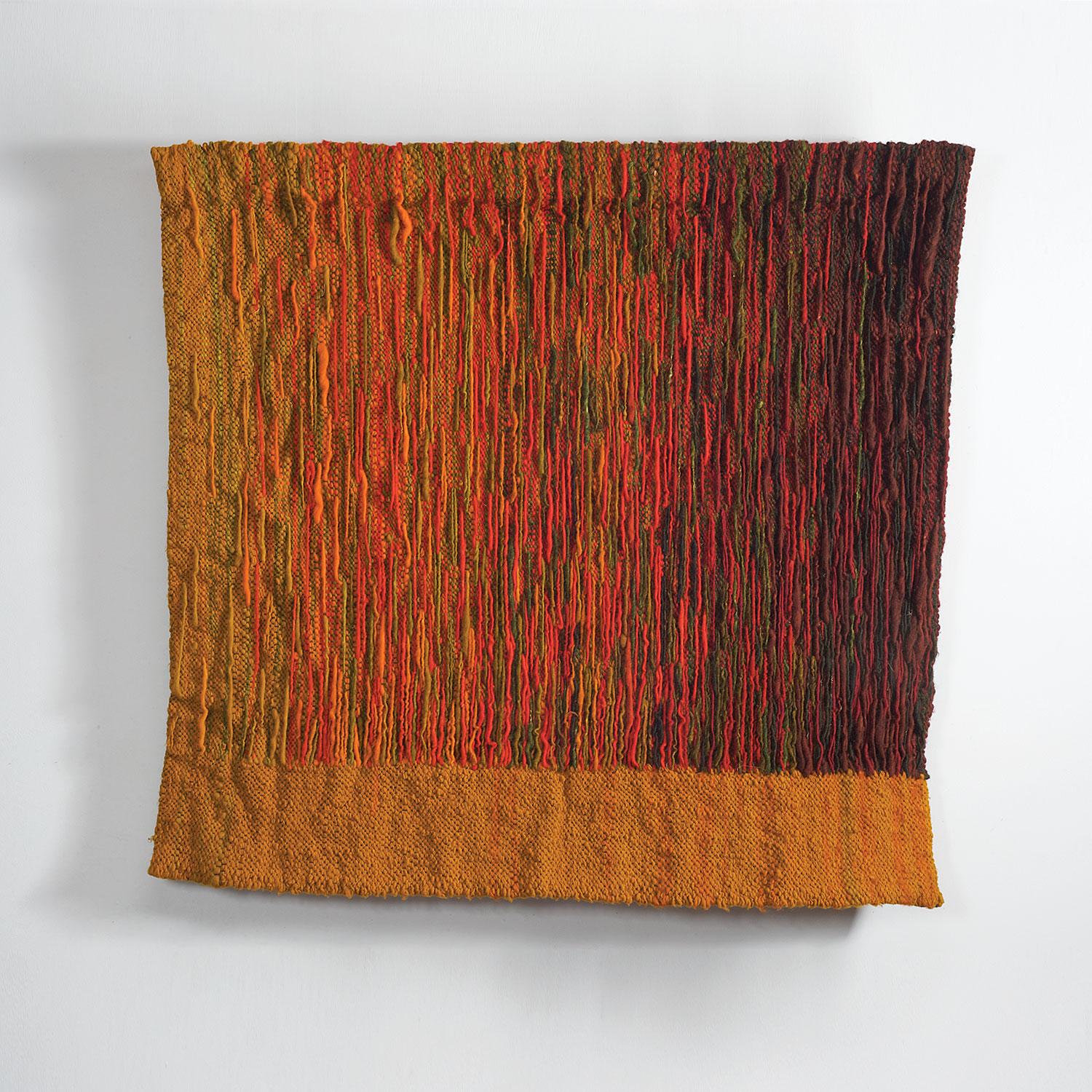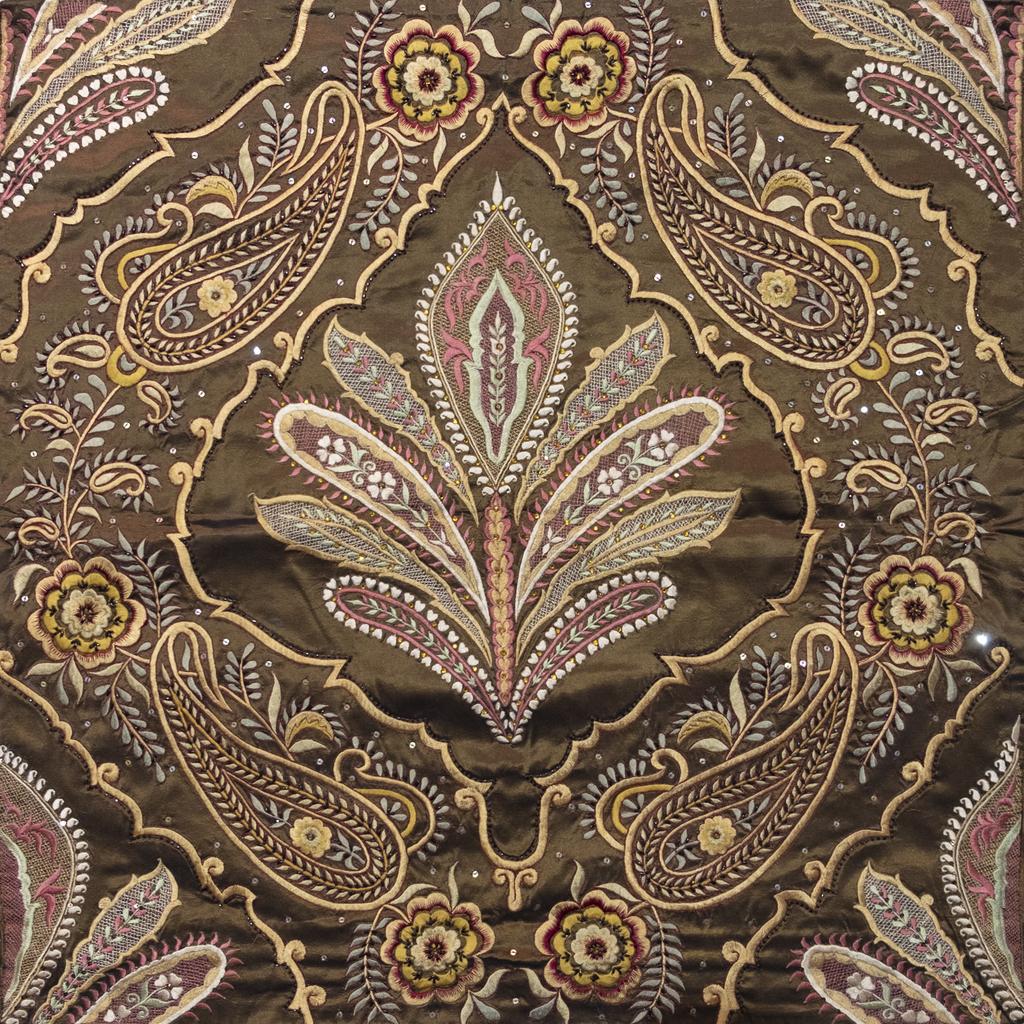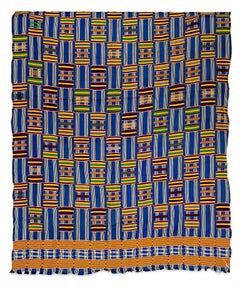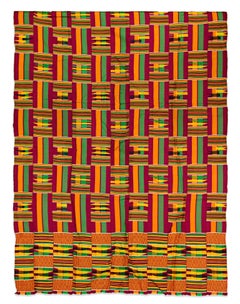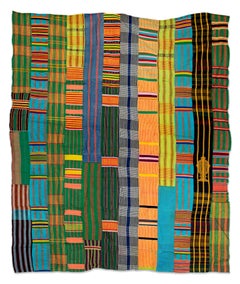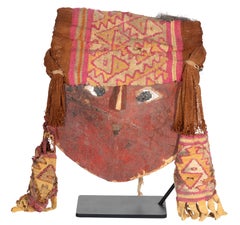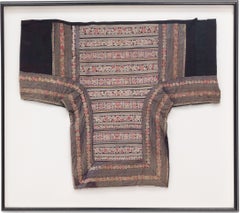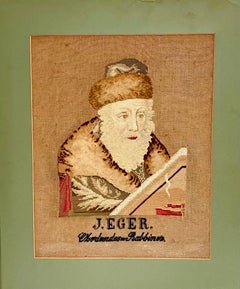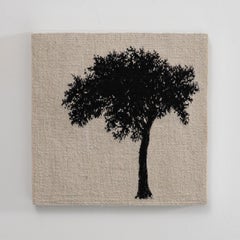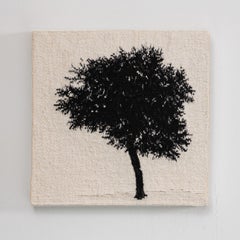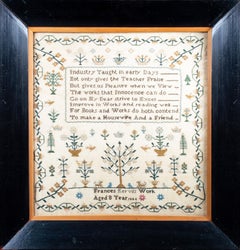
'Cross stitch' original 19th c. sampler with didactic poem and floral design
View Similar Items
Want more images or videos?
Request additional images or videos from the seller
1 of 6
Frances Kervil'Cross stitch' original 19th c. sampler with didactic poem and floral design1844
1844
About the Item
- Creator:Frances Kervil (1836)
- Creation Year:1844
- Dimensions:Height: 16.625 in (42.23 cm)Width: 15.75 in (40.01 cm)
- Medium:
- Movement & Style:
- Period:
- Condition:There are a number of holes in the fabric; however, given the age of this piece, it is in remarkably good condition otherwise. Some general wear to the finish of the frame.
- Gallery Location:Milwaukee, WI
- Reference Number:Seller: 12303c1stDibs: LU60536809472
About the Seller
4.9
Gold Seller
Premium sellers maintaining a 4.3+ rating and 24-hour response times
Established in 1966
1stDibs seller since 2017
429 sales on 1stDibs
Typical response time: 2 hours
Authenticity Guarantee
In the unlikely event there’s an issue with an item’s authenticity, contact us within 1 year for a full refund. DetailsMoney-Back Guarantee
If your item is not as described, is damaged in transit, or does not arrive, contact us within 7 days for a full refund. Details24-Hour Cancellation
You have a 24-hour grace period in which to reconsider your purchase, with no questions asked.Vetted Professional Sellers
Our world-class sellers must adhere to strict standards for service and quality, maintaining the integrity of our listings.Price-Match Guarantee
If you find that a seller listed the same item for a lower price elsewhere, we’ll match it.Trusted Global Delivery
Our best-in-class carrier network provides specialized shipping options worldwide, including custom delivery.More From This Seller
View All"Fabric - Ashanti Tribal Cloth, " Silk Weaving from Africa circa 1930
Located in Milwaukee, WI
Among the most well-known West African textiles is kente cloth, woven by the Ewe and Asante peoples of Ghana. The word kente is not used by the Asante people; it may be derived from ...
Category
1930s Folk Art More Art
Materials
Silk
"Kente Cloth Ashanti Tribe, Ghana, " Silk and Cotton Weaving created circa 1970
Located in Milwaukee, WI
This silk and cotton fabric was made by an unknown Ashanti artist. It features green and orange accents. The Ashanti are a major ethnic group of the Akans in Ghana, a fairly new nation, barely more than 50 years old. Ghana, previously the Gold Coast, was a British colony until 1957. It is now politically separated into four main parts. Ashanti is in the center and Kumasi is the capital.
The Ashanti have a wide variety of arts. Bark cloth was used for clothing before weaving was introduced. With weaving, there is cotton and silk. Women may pick cotton...
Category
1970s Folk Art More Art
Materials
Cotton, Silk
"Tribal Cloth, Ewe Ghana, " Multicolored Cotton Textile created circa 1965
Located in Milwaukee, WI
The Ewe people from Ghana are master weavers. People of means commission cloths called adanudo ("skilled/wise cloths"). Ewe adanudo textiles often display a tweed effect by twisting ...
Category
1960s Folk Art More Art
Materials
Cotton
"Chancay" (Pre-Columbian) Mummy Mask wood face peruvian folk red human folk art
Located in Milwaukee, WI
The Peruvian Chancay (pre-Columbian) Mummy Bundle mask, from around 1600 is made of painted wood, textiles, and human hair. According to the Walters Art Museum:
Andean cultures are ...
Category
Early 1600s Folk Art More Art
Materials
Textile, Wood
"Ceremonial Hunting Shirt - Yoruba, Nigeria, " Glass Beads, Shells, & Cloth
Located in Milwaukee, WI
For the Yoruba people of Nigeria, beads and shells are applied to ceremonial garments and headdresses. Beads are an important part of Yoruba culture. henry John Drewal has written th...
Category
1940s Folk Art More Art
Materials
Fabric, Glass, Found Objects
"Kente Cloth, Ashanti Tribe Ghana, " Cotton Weaving created circa 1970
Located in Milwaukee, WI
This cotton fabric was made by an unknown Ashanti artist. It is mostly black and white. The Ashanti are a major ethnic group of the Akans in Ghana, a fairly new nation, barely more than 50 years old. Ghana, previously the Gold Coast, was a British colony until 1957. It is now politically separated into four main parts. Ashanti is in the center and Kumasi is the capital.
The Ashanti have a wide variety of arts. Bark cloth was used for clothing before weaving was introduced. With weaving, there is cotton and silk. Women may pick cotton...
Category
1970s Folk Art More Art
Materials
Cotton
You May Also Like
Embroidered Miao Baby Carrier Textile
Located in Chicago, IL
The connection between love and embroidery is nowhere stronger than among the minority peoples of China. Hand-stitched by a mother herself or gifted by the women in her family, the t...
Category
Early 20th Century Folk Art Mixed Media
Materials
Cotton, Silk, Thread
Hungarian Rabbi Akiba Eger 19thC Judaica Folk Art Tapestry Needlepoint Sampler
Located in Surfside, FL
Dimensions board backing is 2 X 18.5 board opening is 16.5 X 13 inches
19th Century framed tapestry of a Rabbi, embroidered sampler, with beaded script below. (it reads J. Eger Oberlandes Rabbiner or Oberlander Rabbiner) There is some sort of texture and dimension to his fur hat (Shtreimel) and coat collar. This is being sold without the frame..
Rabbi Akiba Eger (5521-5598; 1761-1838)
Rabbi Akiba Eger was one of the greatest scholars of his time, who had a great influence on Jewish life. He was born in Eisenstadt, Hungary, in the year 5521 (1761), nearly two hundred years ago. The city of his birth was a seat of learning for centuries, and his family was a family of scholars and Rabbis.Rabbi Akiba Eger, who was Rabbi in the famous community of Pressburg (also Hungary, but since 1913 it belonged to Czechoslovakia and was called Bratislava). He was invited to become Rabbi of the famous city of Posen, and in fact became the chief rabbi of the entire Posen province, though he did not carry that title. His famous son-in-law, Rabbi Moshe Sofer (known as the 'Chasam Sofer'), Rabbi of Pressburg, who had married Rabbi Akiba Eger's daughter. King Frederick III of Prussia honored him with a special medal. Rabbi Akiba Eger was recognized as a great authority on Jewish law, and many well known rabbis and Jewish leaders turned to him for advice and decisions on points of law.
"This sort of art, craft work, emerges from a long tradition of Jewish folk art...
Category
Early 1900s Folk Art More Art
Materials
Wool, Mixed Media, Thread
Journey Trees IV, Sara Brennan, hand-woven textile wall sculpture
By Sara Brennan
Located in Wilton, CT
Journey Trees IV, linens and swing threads, 7.5" x 8" x 1", 2021.
This figurative woven textile piece is by UK-based textile artist, Sara Brennan (b. 196...
Category
2010s Contemporary Figurative Sculptures
Materials
Fabric, Textile, Tapestry, Linen, Thread
Journey Trees III, Sara Brennan, hand-woven textile wall sculpture
By Sara Brennan
Located in Wilton, CT
Journey Trees III, linens and swing threads, 8" x 8" x 1", 2021.
This figurative woven textile piece is by UK-based textile artist, Sara Brennan (b. 1963...
Category
2010s Contemporary Figurative Sculptures
Materials
Fabric, Textile, Tapestry, Linen, Thread
Summer and Winter, Mid-Century Tapestry, Woven Hanging, Textile Wall Sculpture
By Adela Akers
Located in Wilton, CT
Adela Akers (b. 1933, Santiago de Compostela, Spain) is a Spanish-born textile and fiber artist. She is Professor Emeritus (1972 to 1995) at the Tyler Scho...
Category
1970s Abstract Abstract Sculptures
Materials
Textile, Linen, Thread, Yarn, Fabric, Tapestry
Refleksy (Reflexes), Mid-Century Wool Tapestry, Abstract Textile Wall Sculpture
Located in Wilton, CT
Refleksy (Reflexes), flax (linen) and wool, 50" x 48" x 2", 1973.
This warm, vivid Mid-Century tapestry, Refleksy (1973) is by Polish textile artist, ...
Category
Mid-20th Century Abstract Abstract Sculptures
Materials
Fabric, Textile, Tapestry, Wool, Linen, Thread
